7 Famous Historical Sites and Landmarks in Guatemala
From the ancient temples of Tikal and the Spanish churches that line the cobbled streets of colonial cities, to ethnic Mayan highland villages and abandoned cities hidden deep in the rainforest, Guatemala is full of treasures just waiting to be discovered.
 Photo © Getty Images/Matteo Colombo
Photo © Getty Images/Matteo Colombo
Like the conquistadors of the Spanish Empire, many have sought the treasures hidden in the jungles of Guatemala. But the riches of this incredible country go far beyond any elusive gold and jewels, and can instead be found in the country’s fascinating history and culture.
- Colorful, historic Antigua
- Bustling Guatemala City
- The Ancient Mayan city of Tikal
- Colonial island town of Flores
- Trek to El Mirador
- Mayan ruins of Aguateca
- Castillo de San Felipe de Lara, Izabal
Colorful, historic Antigua
The UNESCO World Heritage site of Antigua is one of the most beautiful historic cities in Central America. Surrounded by volcanoes, coffee plantations and indigenous villages, the cobbled streets of this 16th-century capital are lined with crumbling colonial churches, convents, and painstakingly restored Baroque buildings, with European-style hotels and some of Guatemala’s best restaurants, cafes, and bars.
Easy to explore by foot, Antigua offers the elegant ruins of the conquistadors' convents and cathedrals, the bustling Parque Central, the Choco Museo, and the Arco de Santa Catalina – the picture-perfect 17th-century archway that has become synonymous with images of Guatemala.
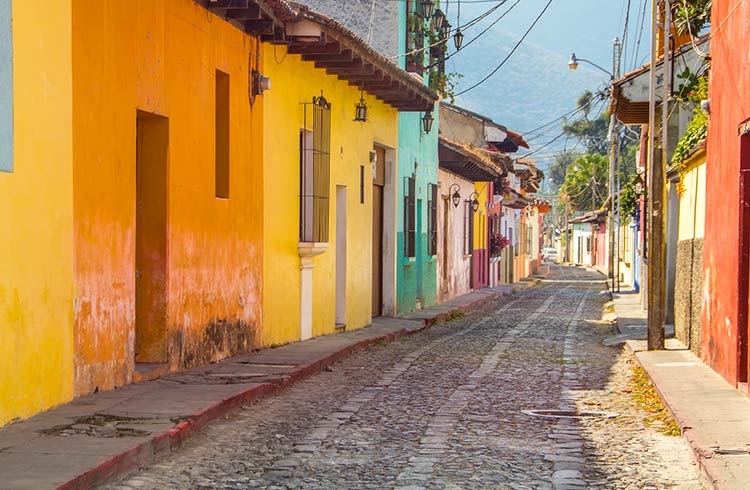
Bustling Guatemala City
Most visitors choose to skip this bustling metropolis and instead base themselves in the tranquil colonial streets of Antigua, but dig beneath the surface and Guate – as the locals call it – has a fair few treasures of its own. First established as the capital in 1775, the city’s Centro Historico is home to some beautiful old churches, the Metropolitan Cathedral, the Palacio Nacional de la Cultura, and the National Library, along with theaters, art galleries, a botanic garden, and some of Central America’s most interesting museums.
There is also an ancient Mayan site right in the heart of the city, Kaminaljuyu, though this is nowhere near as interesting as some of the other sites further north. The majority of Kaminalijuyu is still buried beneath the rapidly expanding city. Aside from being an important archeological site, it is still a sacred place for both Mayan and Christian communities in Guatemala, with traditional ceremonies performed here most days of the week. You can organize a local guide in advance, and getting there should only take 15 minutes in a taxi or an Uber from tourist areas around the city.
The ancient Mayan city of Tikal
Located in the tropical rainforests of Petén in northern Guatemala, Tikal is one of the country’s most revered and fascinating destinations, and for good reason. Dating back to 400BC, Tikal was once one of the biggest and most powerful cities in the Mayan empire until it was abandoned about 1,000 years ago. Its decline began during the Classic Maya Collapse at the end of the 9th century, and it’s thought that Tikal was finally abandoned due to overpopulation and agrarian failure, or a meteorological drought following unsustainable levels of inequality. Forgotten, and largely overgrown by the jungle, Tikal became the stuff of legend until it was finally rediscovered by a team of intrepid explorers in 1848.
It’s easy to spend several days exploring the pyramids, temples, and ancient ruins dotted throughout the rainforest. If you want to stay in the park itself, there are a variety of accommodation options, with several upmarket hotels with pools, and camping or hammocks for those on a budget.
Join a guided sunrise or sunset tour to see the site in all its glory while the jungle comes to life all around you. You’ll hear howler monkeys, spider monkeys, coatimundis, toucans, wild turkeys, and even jaguars nearby. Although you can get onward transport to other places in Guatemala from Tikal, nearby Flores is the main regional hub, with a local airport, shuttles to Mexico, Belize, Honduras, and around Guatemala, and plenty of accommodation options available.

Colonial island town of Flores
An hour or so away from Tikal, Flores is a beautiful colonial island town on Lago de Peten Itza, connected to the mainland via a narrow causeway. Dating back thousands of years to 900BC, the island was once the ancient capital of the Itza, known as Tayasal. Although there are not many remaining relics from the Mayan times, its narrow, winding, cobblestone streets, old Spanish church, and historic square make the island the perfect base for exploring the historic site of Tikal, with both public and private transportation available to the ruins.
There are plenty of accommodation options and places to eat, and great transport options if you’re continuing your journey to Mexico, Belize, Honduras, or the rest of Guatemala.
Trek to El Mirador
Take the arduous five-day trek to El Mirador, an ancient Mayan city in the rainforest. This mysterious city was once one of the largest in the ancient world and home to more than 100,000 people. The highlight is a series of impressive triadic pyramids, with rickety ladders and steep stone stairs to the top which offers spectacular views over jungle canopy and nearby temples.
Accessible only on the multi-day trek through the jungle, or by helicopter, archeologists are still only beginning to uncover the history of this evocative city, which is thought to have originated nearly 3,500 years ago, until the people abandoned it around 1,850 years ago.
Treks run from the village of Carmelita and can be organized in Flores or Santa Elena. Expect to pay anywhere from US $290 to US $600+ for the trek. Keen adventurers should also consider adding on a sixth day to see Nakbe and Wakna, where you can trace the footsteps of the ancient Mayans along an ancient causeway and capture a glimpse of several other lost cities in the jungle.
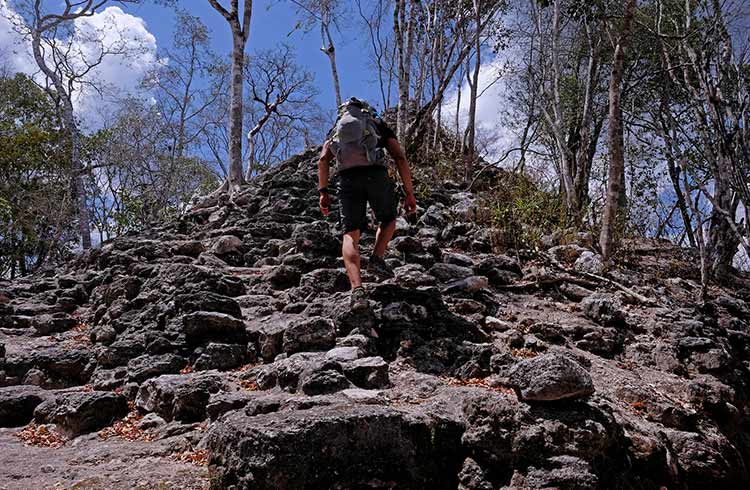
Mayan ruins of Aguateca
If the long hike through the jungle puts you off visiting El Mirador, the Mayan ruins of Aguateca are a great alternative. The best way to get there is by taking a bus to Sayaxche and then taking a canoe up-river to Lago de Petexbatun through swampland and mangroves and untouched jungle. You can organize accommodation and book a tour and driver upon arrival in Sayaxche, or if you want to have everything sorted in advance, you can also jump on a day tour from Flores. Once you arrive, it takes just over an hour to tour the site, which includes temples, palaces, and ornate carvings of hummingbirds, pineapples, and pelicans – plus, breathtaking views of the lake and surrounding jungle.
Camping is possible, but you will need to bring your own tent or hammock, and copious amounts of bug spray!
Castillo de San Felipe de Lara, Izabal
If traveling to Guatemala’s Caribbean coast and Rio Dulce, visit the stunning Lago de Izabal, where the Castillo de San Felipe has been protecting the San Antonio port against pirate attacks since 1644. Featuring a drawbridge, cannons, and a lookout tower, the 17th-century fortress feels very much like a European castle built on the edge of the Caribbean Sea.
It’s a pleasant spot to explore the history and check out the great views of the lake from the lookout tower. It’s easy to get to the castle from Rio Dulce, where there are plenty of accommodation options and great transport links throughout the country and onto Honduras and Belize.
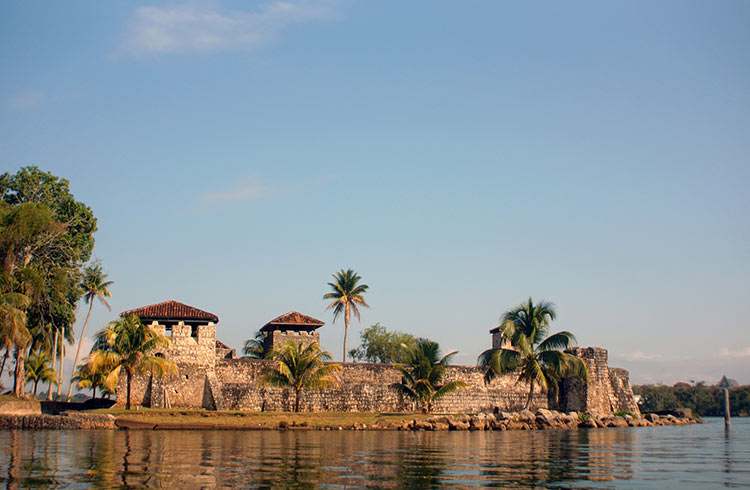
Related articles
Simple and flexible travel insurance
You can buy at home or while traveling, and claim online from anywhere in the world. With 150+ adventure activities covered and 24/7 emergency assistance.
Get a quote
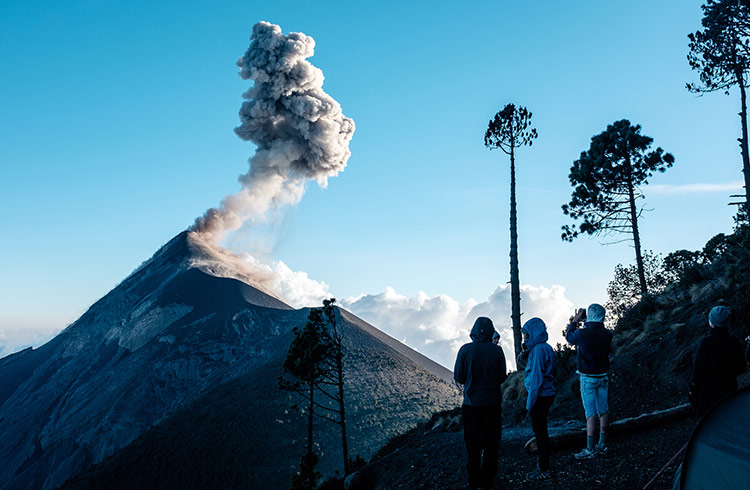
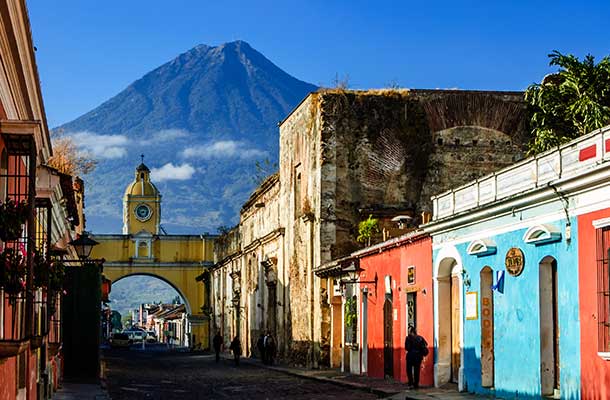
No Comments